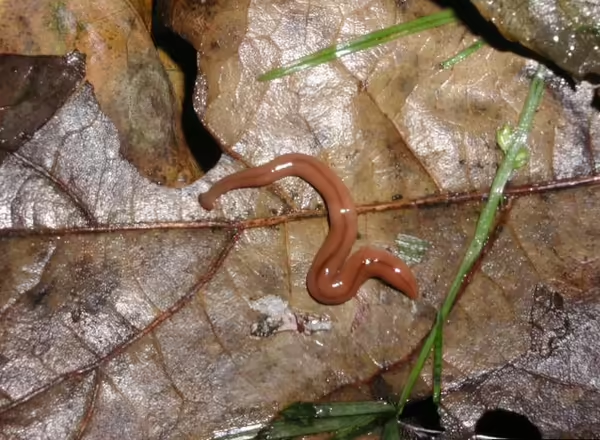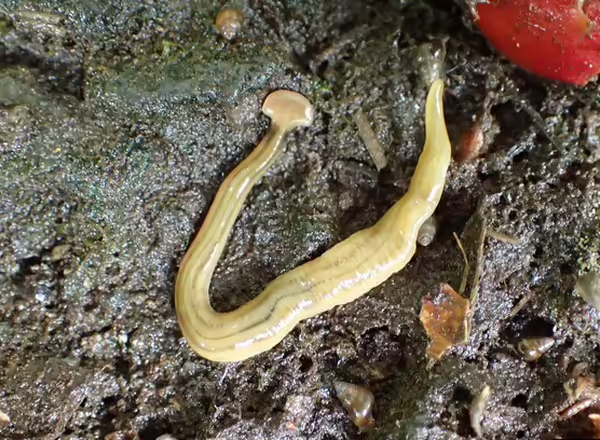Hammerhead worms (Bipalium spp.) are planarians, or flatworms, that inhabit moist areas, often found under rocks or other debris. The main threat posed by hammerhead worms is to earthworms, most of which are also not native. Because their mucus contains tetrodotoxin, wash your hands after handling them or wear gloves. This chemical can also be irritating to the eyes or mouth.
How to Identify Hammerhead Worms
While they closely resemble earthworms, hammerhead worms have one to several stripes down the length of their body with a flattened and shovel-shaped head. The genus name “Bipalium” comes from the Latin words “bi-" or “two” and “pala” meaning “shovel,” since the head resembles a pickaxe. It is thought there are about three different species of this non-native worm now found in Illinois. Hammerhead worms favor moist conditions and are frequently found under rocks and logs, in leaf litter, or in mulch.


Natural History
Hammerhead worms were introduced to the U.S. around 1891. Native to Southeast Asia, they were first reported in Illinois in the Urbana area around 1997. Find where they have been reported on EDDMaps.
Hammerhead worms eat other invertebrates, such as earthworms, slugs, isopods, and other insect larvae. They are able to track their prey, gliding with a movement similar to snakes. They then capture their prey, wrapping their bodies around it, using a slimy mucus that contains tetrodotoxin to prevent them from escaping. The toxin is the same substance found in the blue-ringed octopus and pufferfish. Due to the presence of this toxin, take care to limit contact when handling them by wearing gloves. Pets should not be allowed to eat them.
Flatworms reproduce by laying cocoons after mating, or more commonly, by cloning themselves through cut segments of their own bodies. They will break off sections of their body near the tail, which will then grow a head and become a new worm.
How to Manage Hammerhead Worms
Because of their ability to reproduce asexually, the eradication of a population is difficult. Do not cut up worms to destroy them because this will make more worms. Avoid touching worms with your hands by wearing gloves or using tweezers to pick up flatworms. Place the worms in a jar or bag with rubbing alcohol, vinegar, or salt or freeze them. To avoid direct contact, salt can be sprinkled directly on them; however, use care as this can damage the soil and any surrounding plants.
If worms are found in potted plants or nursery stock, isolate the material and treat before moving outside. Hammerhead worms have been found in mulch and other landscaping materials, so it is good practice to examine any material brought in for pests and ask the supplier if you have questions. Fortunately, large infestations are exceedingly rare, and treatment is generally unnecessary.
More Information
USDA National Invasive Species Information Center, Hammerhead Worm
Arkansas Cooperative Extension, Hammerhead Worms
Authors: Jamie Viebach, horticulture educator, and John Schepis, Extension specialist.